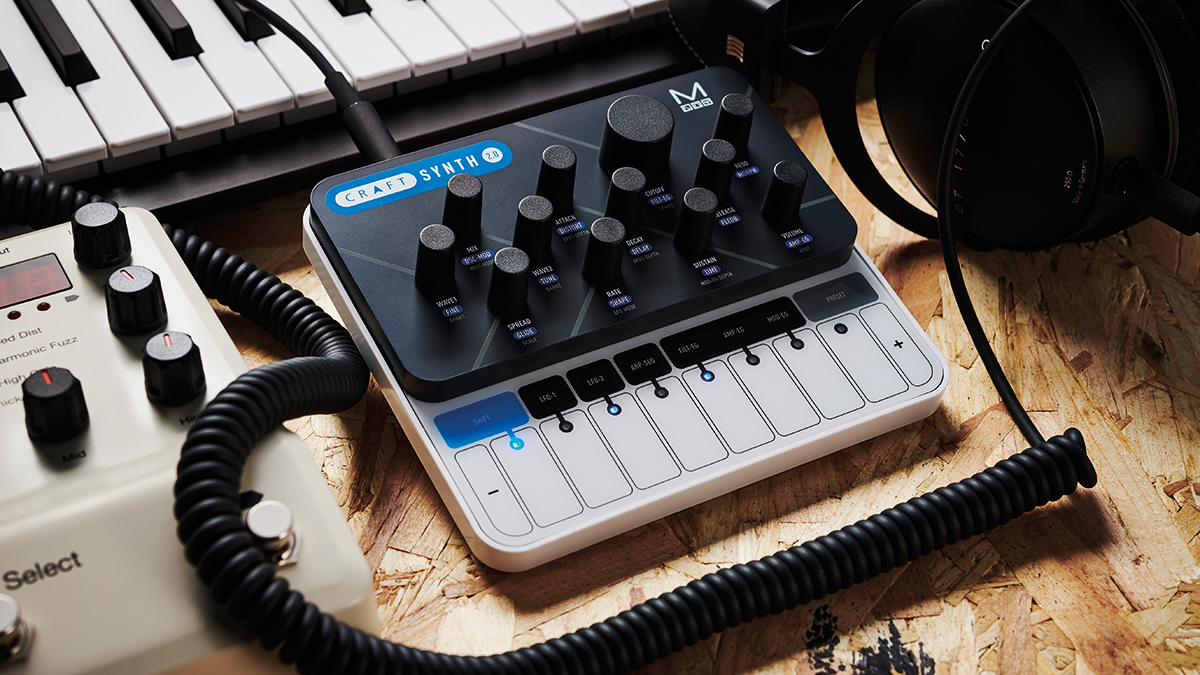MusicRadar Verdict
A great little synth with a wide palette. With oscillators and modulation capabilities beyond your average virtual analogue, it’s great value
Pros
- +
Very powerful wavetable oscillator section with multiple modulation options
- +
Analogue clock sync (Korg Volca/Teenage Engineering spec)
- +
Comprehensive software editor
Cons
- -
Effects only very basic (and in mono)
- -
Only monophonic (it would be great to play some of these sounds with full polyphony!)
MusicRadar's got your back
What is it?
Many of Modal Electronics’ synthesizers sit behind a numerical naming scheme that gives little away about their origins, intent or architecture. However, more recently, they have been producing a range of boxes that – as well being a great deal more friendly on the pocket than their well-regarded (but distinctly high-end) offerings – employ much more friendly monikers.
So, besides the recent Skulpt, we have the original Craft Synth and Craft Synth 2.0. In its first incarnation, the Craft was provided as a ‘no-solder’ self-assembly ‘kit’. For 2.0, Modal has embraced a full case, expanded sonic spec and wider complement of controls, inputs and outputs. The good news, however, is that cost has been kept low at £129.
Overall, this is a small and lightweight package, with a tilted plastic case, and room on the rear for full-size MIDI ports, analogue sync in/ out mini-jack line output, headphone and micro-USB ports. The front panel has 12 rotary encoders which, when combined with the eight ‘touch’ buttons, provide access to all programming parameters. Power is provided by batteries or USB port, which also carries MIDI data, for use with the free Modal app.

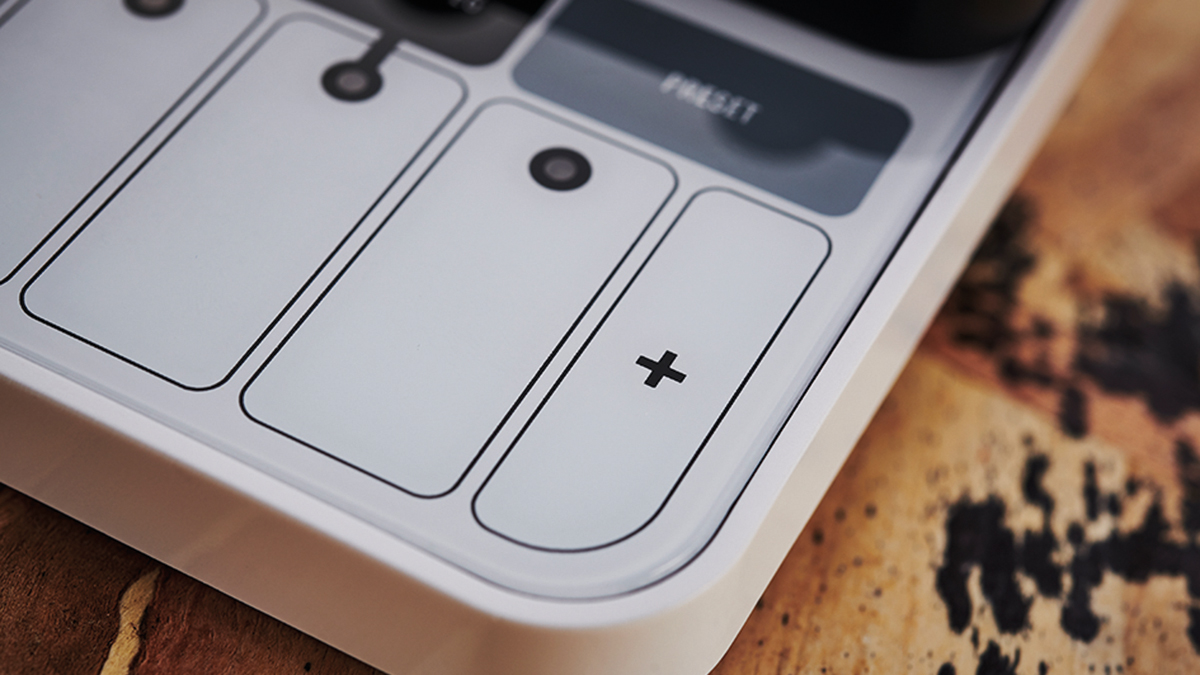
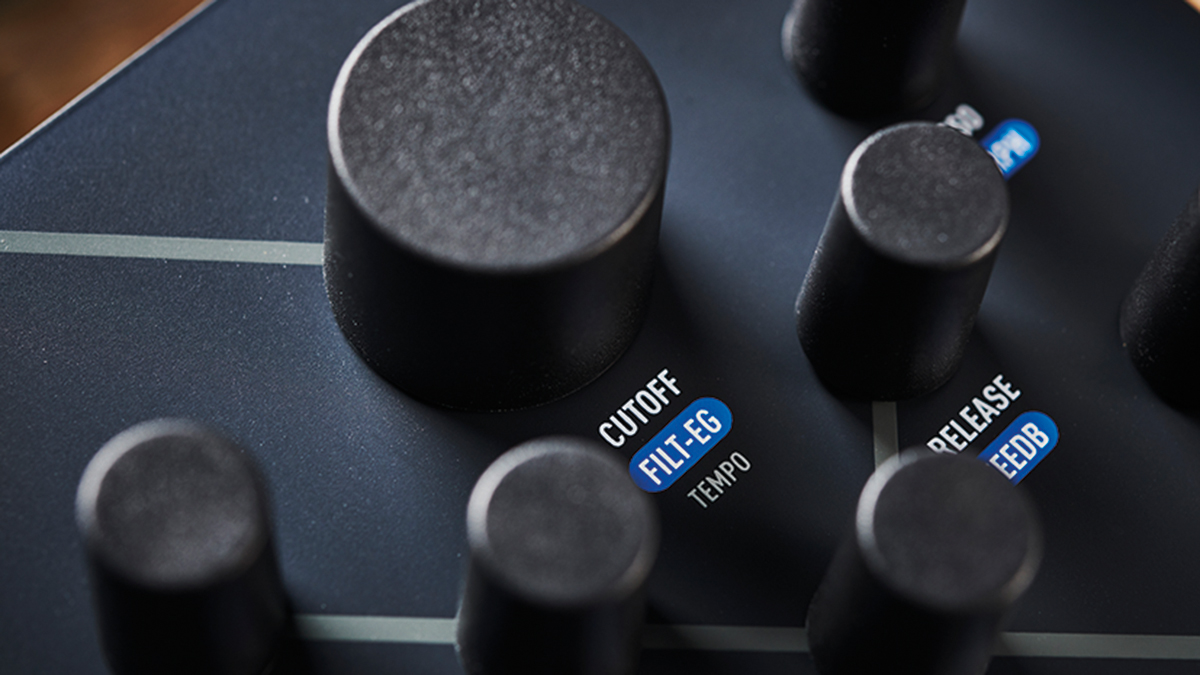
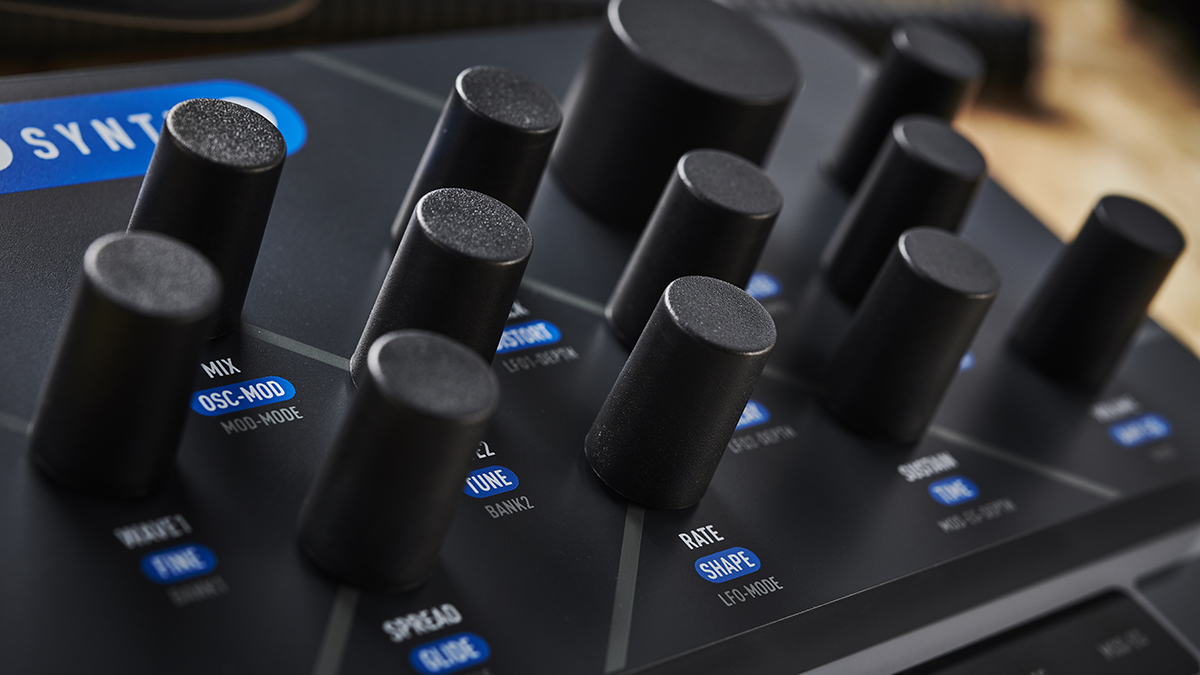
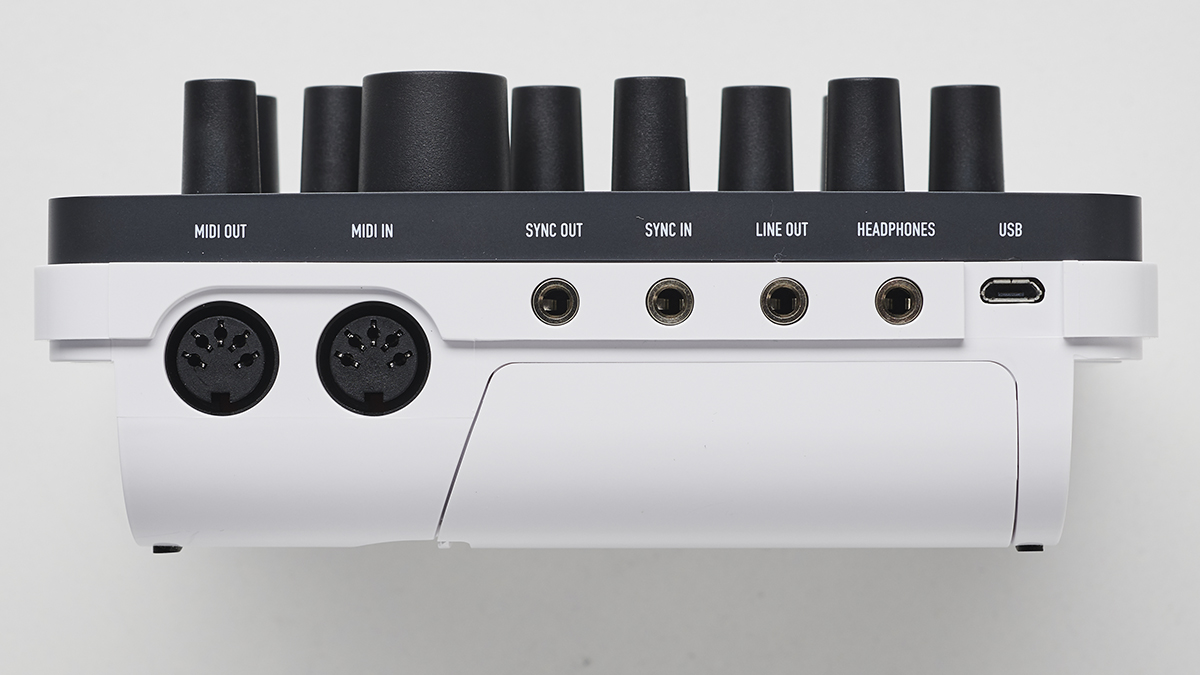
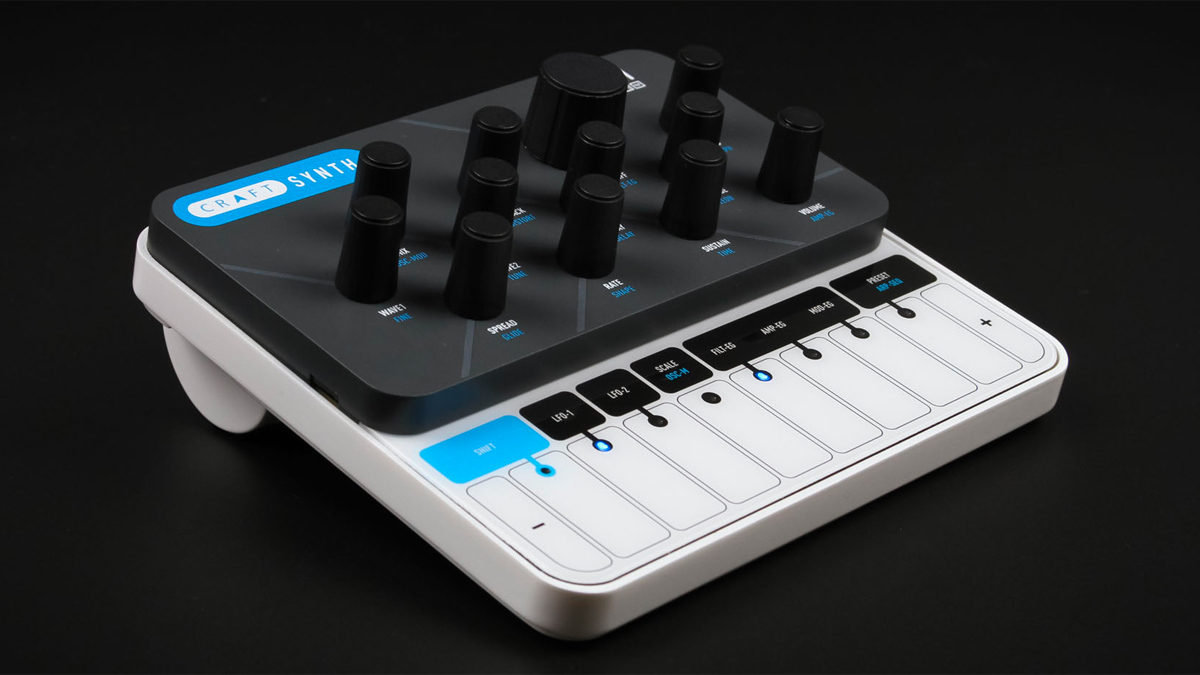
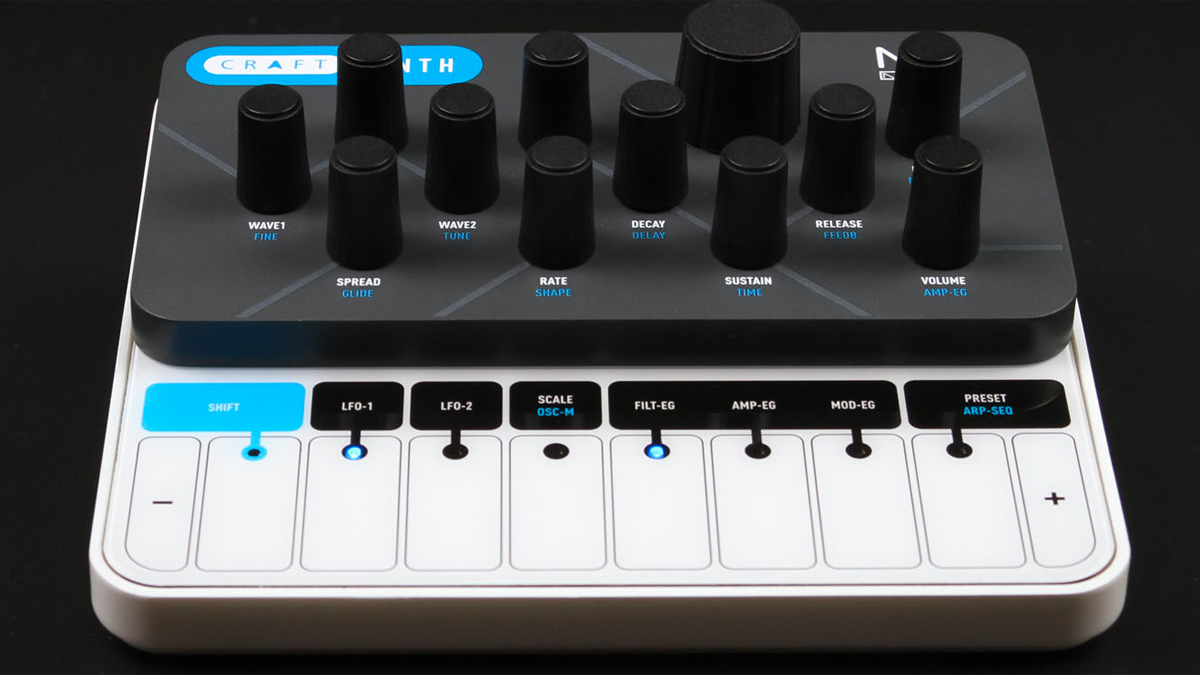
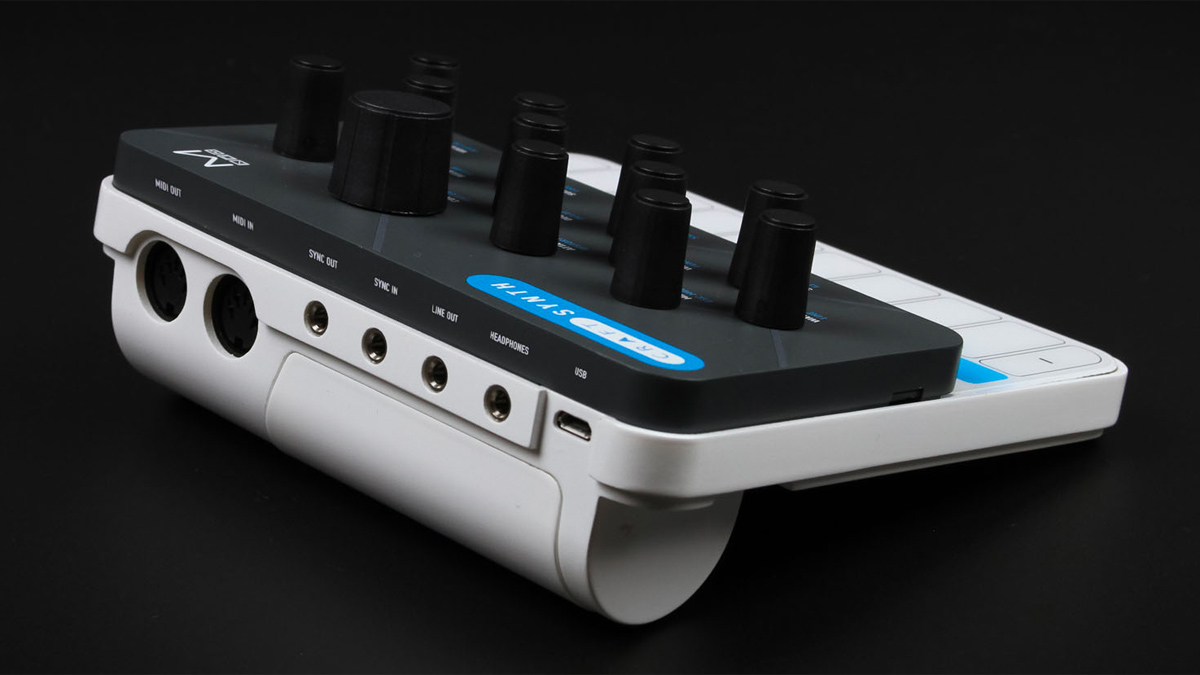
Performance and verdict
Unlike their higher-end offerings, Craft Synth 2.0 has an all-digital architecture but employs synthesis techniques from across the sonic spectrum. At the core of the CS 2.0 lies two wavetable oscillators, which can each access eight banks of five morphable wavetables. Oscillator 2 has an additional sine/noise bank. Within each of these banks, you can move between the wavetables in 32 increments using the Wave 1 and Wave 2 controls. There is also a Mix control for determining the relative balance of the two, and tuning controls for offsetting their pitches.
It’s worth stating at this point that, although the CRAFTsynth 2.0 is monophonic in terms of how many notes can be played at once, the Spread parameter allows you to have eight voices triggered at once. In the first half of its range, this generates an ever fatter unison sound. Beyond this, you get a host of multi-note chords.
Where things get even more interesting is when delving into the Osc-Mod and Mod-Mode parameters. Osc-Mode determines the oscillator modulator amount, with 16 different modulation types available. Modulation is applied either to Wave 1 alone or with Wave 2 modulating Wave 1. Although more common forms of modulation such as Hard Sync, FM, Ring Modulation and Bit Crushing are included, there are many other variants to occupy you – and describing them all would provide little insight into what they actually sound like.
Needless to say, there is big scope for interesting sound design here – particularly when modulating the Osc-Mod parameter itself.
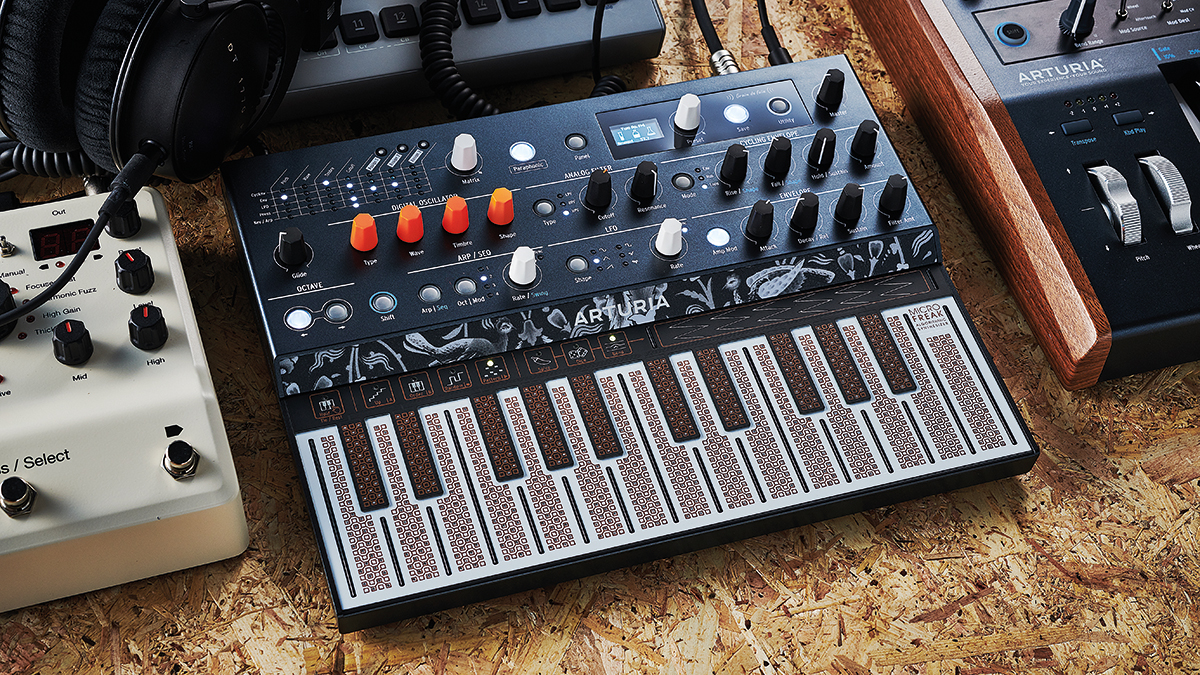
• Modal Electronic Craft Synth
• Modal Electronics Skulpt
• Arturia Microfeak
Things return to conventional subtractive synthesis territory with the filter. Here you get a 2-pole (12dB/ octave) resonant filter that can be morphed from low-pass, via band-pass to high-pass. It’d have been nice to have something with more bite (especially in its low-pass guise), but this is only a small quibble. The filter has its own four-stage (ADSR) envelope – with dedicated envelope depth control. This sits alongside an Amp Envelope and additional Mod Envelope, which can be freely assigned in the eight-slot modulation section. Two LFOs fit in this line-up, and as with the osc section, it has a few tricks up its sleeve. Each LFO can be assigned to any front parameter by holding down the relevant LFO button. LFOs can be free-running, re-triggered on each note, or used as a single cycle, pseudo-envelope. LFO-2 can also lock to a division of the frequency played, for useful modulations (FM etc) – a nice feature.
The final puzzle piece comes in the form of a simple effects section featuring a wave-shaping overdrive Distortion and basic monophonic Delay. These are nice, though more flexibility would have been great here. The delay, in particular, would have benefited from being stereo (with variable offset between left and right channels) – though this is a limitation of the hardware – and with some way of modulating delay time under LFO or envelope control. The built-in arp/ sequencer is surprisingly flexible, so it can be programmed as a step sequencer (with rests) by using the basic front panel keyboard.
The Craft Synth 2.0 can do conventional virtual analogue tones but goes way beyond this with the wavetable, morphing and modulation capabilities. The keyboard is fine for trying ideas or triggering a sequence, but little else – though this is no different from Korg’s successful Volca range. Although the unison and chord modes provide added harmonic depth, we wanted to hear some of the sounds with true polyphony. This would have increased cost though and undermined the synth’s core appeal.
The portable nature of the CS 2.0, while maintaining a decent degree of hands-on control is particularly alluring, while the great software editor allows for much deeper sonic exploration. The Craft Synth 2.0 packs in a lot for the price – and fully deserves to do well.
MusicRadar verdict: A great little synth with a wide palette. With oscillators and modulation capabilities beyond your average virtual analogue, it’s great value.
The web says
"It's unassuming, and frankly, it feels kinda flimsy. Once you plug it into a decent set of headphones or speakers, though, it comes alive."
Engadget
"If you are laptop-based, this could become an indispensable part of a portable rig, weighing next to nothing, and with a cool little accessory case available to keep it protected when on the move."
MusicTech
Hands-on demos
BoBeats
Telekom Electronic Beats
Specifications
- Compact monophonic wavetable synthesizer
- Eight oscillators with two selectable waveforms and mixer
- 40 unique waveshapes available
- Choose one of 16 oscillator modifiers ranging from FM, Sync, Ring Mod, Bitcrushing, Wavefolding, and more
- Three envelope generators: Filter, Amp, and Modulation
- Two LFOs (both of which extend into audio range)
- 8-slot modulation matrix
- Built-in sequenced arpeggiator
- 2-pole resonant morphing filter
- Delay and distortion effects built-in
- 8-key keyboard with scale selection
- Analogue clock I/O and MIDI DIN I/O
MusicRadar is the number one website for music-makers of all kinds, be they guitarists, drummers, keyboard players, DJs or producers...
- GEAR: We help musicians find the best gear with top-ranking gear round-ups and high-quality, authoritative reviews by a wide team of highly experienced experts.
- TIPS: We also provide tuition, from bite-sized tips to advanced work-outs and guidance from recognised musicians and stars.
- STARS: We talk to musicians and stars about their creative processes, and the nuts and bolts of their gear and technique. We give fans an insight into the craft of music-making that no other music website can.
“A synthesizer that is both easy to use and fun to play whilst maintaining a decent degree of programming depth and flexibility”: PWM Mantis review
“I feel like that song had everything we needed to come back with”: Bring Me The Horizon’s Lee Malia on Shadow Moses, its riff and the secrets behind its tone, and why it was the right anthem at the right time
“I said, ‘Are we sure we can write a song about death?’”: The story of Mike + The Mechanics' classic No.1 The Living Years
